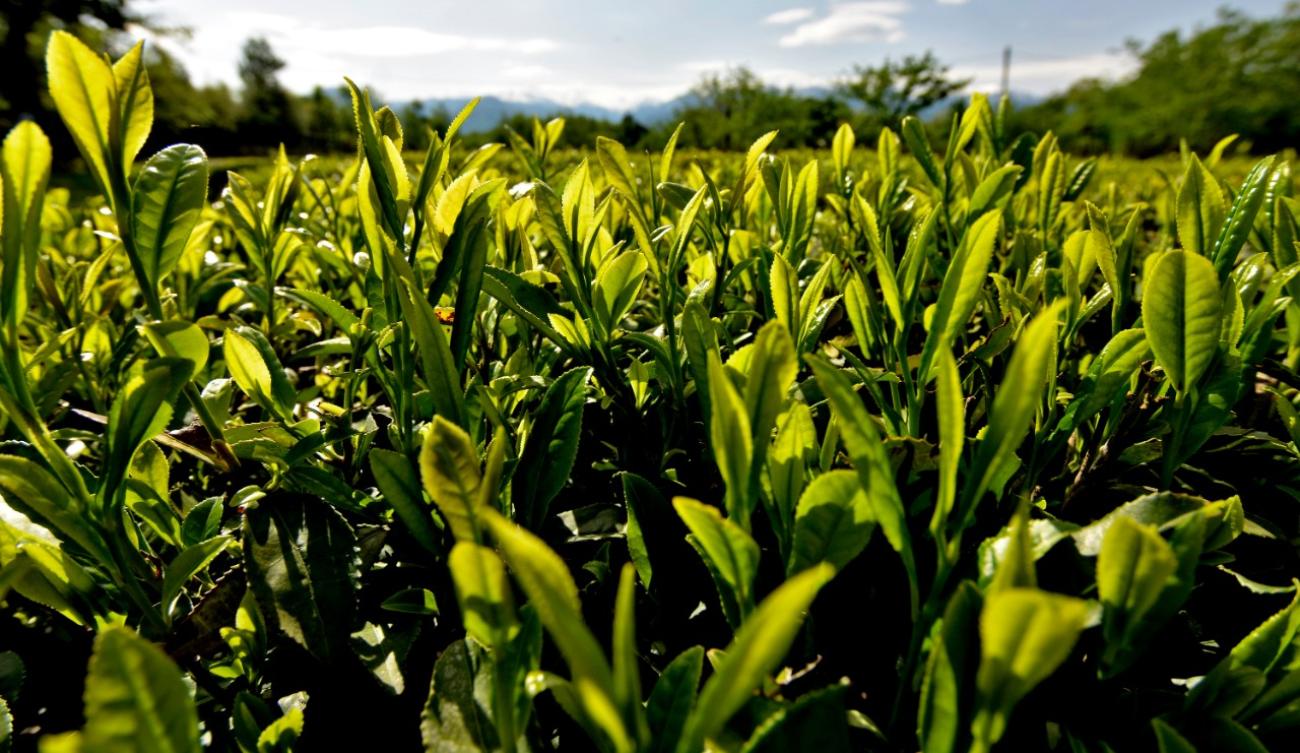Gurian tea: rebirth of tradition and trade

With UNDP support, small farmers are bringing Georgian tea back to the world stage
We may never know who first thought to plant tea in Georgia’s fertile soil. Dating back to the early 1800s, various stories attribute the fateful act to a local nobleman, to a Scottish captain stranded on Georgia’s shores or to a Georgian prince who smuggled seeds from China.
Though the origin may be shrouded in mystery, one detail is universally agreed upon: it happened in Guria, a tiny, picturesque region nestled between the heights of the Lesser Caucasus mountains and the coast of the Black Sea. The tea industry’s renaissance is sprouting in this cradle of Georgian tea culture.
Mikheil Tsintsadze is among the ‘old guard’ of tea producers. In the Soviet era, he was an engineer at a tea processor in Guria’s central town, Lanchkhuti. Georgia’s run as the world’s fourth-largest tea producer ended with the collapse of the Soviet Union, which pushed the industry and the country into a prolonged economic crisis. With the exception of a few household plots, tea plantations were all but abandoned. However, the Tsintsadze family preserved the tradition of tea cultivation, nurturing it until it grew into a private enterprise a few years ago.
“Currently, we produce nine types of tea, including our exclusive black tea encapsulated in a whole dried lemon skin. The slow drying process reduces it to a walnut-sized ball, which you simply put into a pot of hot water. The subtle aromas of the best black tea and delicate dried fruit is incomparable,” says Mikheil Tsintsadze.
Tsintsadze’s company, Georgian Flavour, contributes not only to the rebirth of a traditional industry but also to the revival of the local economy; in addition to directly employing 15 people, the company buys fresh tea leaves from about 80 local tea growers.
Tiny Guria is as lovely as it is poor. Local citizens and authorities see the growing interest in tea culture as a life-changing opportunity for the region. Before the COVID-19 pandemic hit Georgia, the recently established Tea Route scenic trail brought over 2,000 visitors to the region in just one year.
Georgian Flavour was one of 29 small enterprises in Guria financed by the United Nations Development Programme (UNDP) through a small grants programme supported by the Swiss Agency for Development and Cooperation, the Austrian Development Cooperation and the Georgian Ministry of Regional Development and Infrastructure. Local entrepreneurs used the funds to launch new businesses and keep existing ones afloat as pandemic lockdowns severed revenue streams.
Mikheil Tsintsadze used the grant to build an outdoor tea tasting space in his yard, which allowed the entrepreneur to host guests — while simultaneously following pandemic safety regulations — and to provide other local producers with a thriving trade space.
Tsintsadze recently said, “the pandemic would have been much harsher for us if it weren’t for the assistance.” He added that the initiative prompted him to bring to life other business ideas of his. He will soon make high-quality dried fruits — persimmons, kiwis, apples, oranges and grapefruit — available in shops together with artisan teas. He hopes that as pandemic restrictions are slowly lifted, visitors will return to enjoying Georgian tastes and aromas.
In the early 1900s, brews from the Gurian hills won international awards for best tea and a gold medal at the Paris World Expo. Having been carefully cultivated in the lush backyards of Guria, the once-famous Georgian tea is returning to the world stage.


